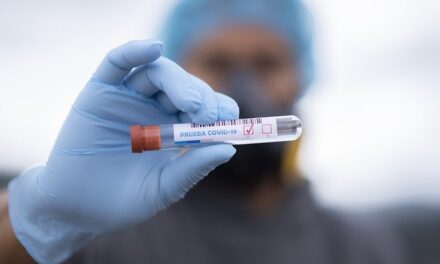By Mileah Kromer
Thanks to MarylandReporter.com for the opportunity to respond to Barry Rascovar’s Oct. 1 column on our recent poll.
The central argument in Mr. Rascovar’s piece is that a poll taken in mid-September can’t predict what will happen in June 2018. You will get no argument from me, or any other pollster, on this point. In fact, I’m left wondering who is asserting that a September 2017 poll can predict the outcome of a June 2018 primary election?
Polls can tell you the current state of a race or opinion toward a policy or elected officials during the time the survey is fielded, but can’t tell you what the public will be thinking in the future.
The purpose of our poll was to find out where Democratic voters are at now—in mid-September—not to say where they will be in June 2018.
Doug Gansler
Rascovar uses Doug Gansler’s inclusion as a candidate to question the value and validity of the poll Goucher College released last week.
Given that Ganlser was the second-place finisher in the 2014 Democratic gubernatorial primary and a rumored candidate, I made the decision to include him on the poll. The Goucher Poll made calls from Thursday, Sept. 14 to Monday, Sept. 18. On Sept. 18, the Washington Post reported that Gansler was out.
Gansler’s inclusion does not diminish the value of our poll. The poll results still help us understand the contours of public sentiment and their meaning in our politics. For example, Gansler has been largely out of public life since his primary loss in 2014, yet he remains a recognizable name in Democratic politics.
I now want to know who Doug Gansler will endorse and I find his comments to the Daily Record on the 2018 gubernatorial race all the more interesting. Hogan “is beatable but it’s going to be really difficult,” he told the Daily Record’s Bryan Sears. “He’s going to have $25 million to $30 million and he has high favorability numbers.”
“Of the (Democrats) currently running, I don’t know of one of them that is necessarily better for beating Governor Hogan, though all of them certainly represent Maryland Democratic values,” Gansler said.
The Goucher Poll also asked questions about ideological and issue preferences of Maryland Democratic likely voters. In a race in which Sen. Bernie Sanders has endorsed Ben Jealous, it’s quite valuable to know whether Democrats prefer a progressive or a moderate Democratic nominee.
On sampling and sample sizes
Mr. Rascovar criticizes our polling on the basis of sample size noting that “Goucher’s results were culled from just 324 registered Democrats.” Yet, they aren’t “just 324 registered Democrats” they are 324 registered Democrats screened from a dual-frame (cell phone and landline) stratified random sample of Maryland adults.
The American Association for Public Opinion Research provides useful resources to explain random sampling, margin of sampling error, and provides a robust analysis of polling and the 2016 election, thus I will not do so in this article.
Rascovar points out the number of respondents from the different regions of the state and then concludes that “it’s hardly a viable way to judge the political landscape in the Democratic governor’s race in those regions.”
The geographic distribution of the Goucher Poll results reflect the Maryland population parameters established by the Census Bureau’s American Community Survey. And, the reason that the demographics of the Goucher Poll sample closely represents the population parameters of Maryland is due to scientific random sampling.
Nowhere in the Goucher Poll press release or in my commentary were regional conclusions made. I purposefully did not provide results by any subsample due to the sample size. The Goucher Poll results represent the opinion of Democratic likely voters in Maryland.
Related to this point, there will always be fewer Democrats from the Eastern Shore, Southern, and Western Maryland than from the Capitol and Central regions in polls of Maryland as this accurately reflects our population distribution.
Would I have liked to have a larger sample? Sure. If it was larger, I would have been able to provide some analysis by demographic subsamples.
Undecided is an opinion
Mr. Rascovar notes that “stunning 44% indicated they didn’t have a clue who they were going to vote for nine months from now in the June 26 Democratic gubernatorial primary. Thus, only 161 people in the survey actually expressed an opinion.”
To this point, I’ll just note that being undecided or having no preference is still a valid and important opinion.
Indeed, Rascovar’s analysis of the Democratic primary race at the end his piece is consistent with the findings of the Goucher Poll. He notes that “with no clear front-runner or a widely recognized figure in the race, it will take time for Democrats to figure out who these candidates are and which ones are the most appealing, the most qualified and the most viable in the general election against a popular Republican governor.” And, given the results of our scientific poll, I have to agree with his analysis.
Mileah Kromer is the director of the Sarah T. Hughes Field Politics Center at Goucher College, which conducts the Goucher Poll. She is also an associate professor of political science. Her email is mileah.kromer@goucher.edu; Twitter: @mileahkromer.




Recent Comments